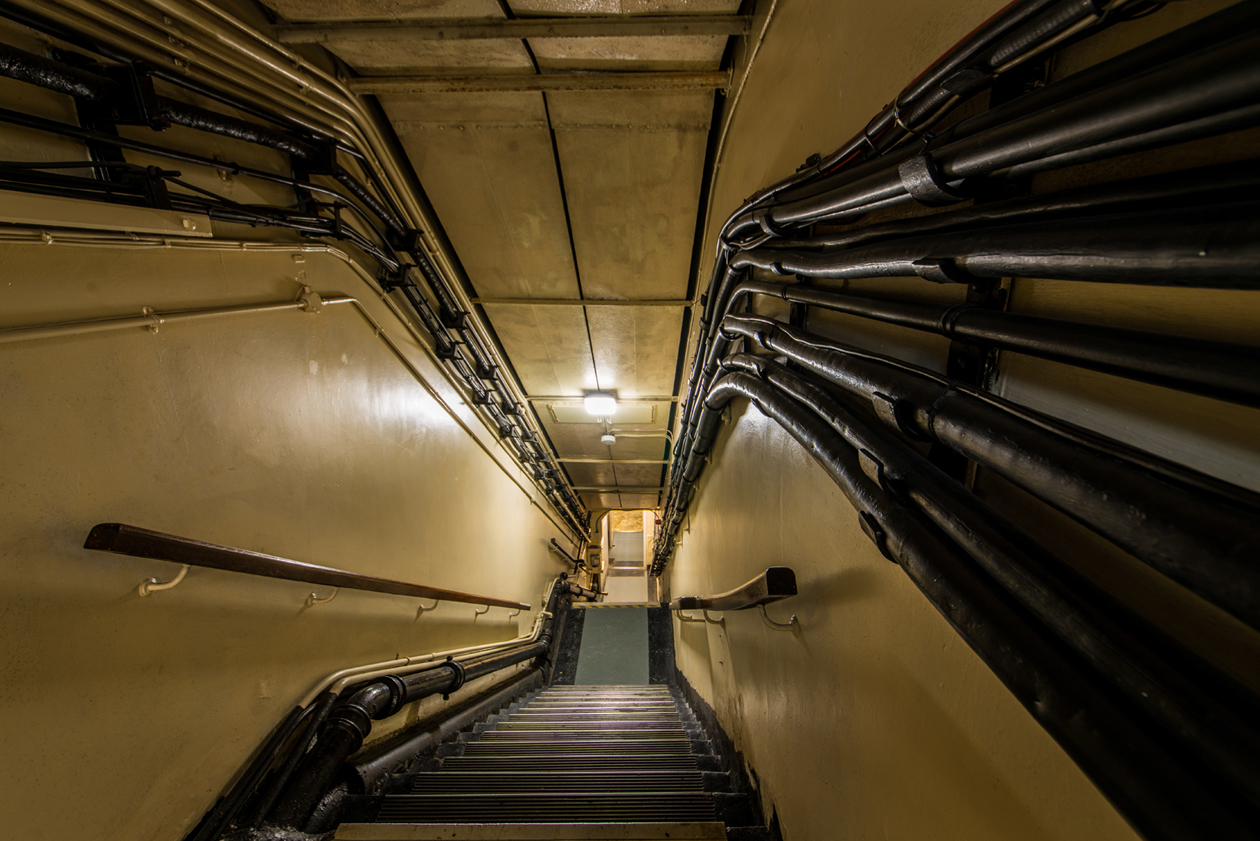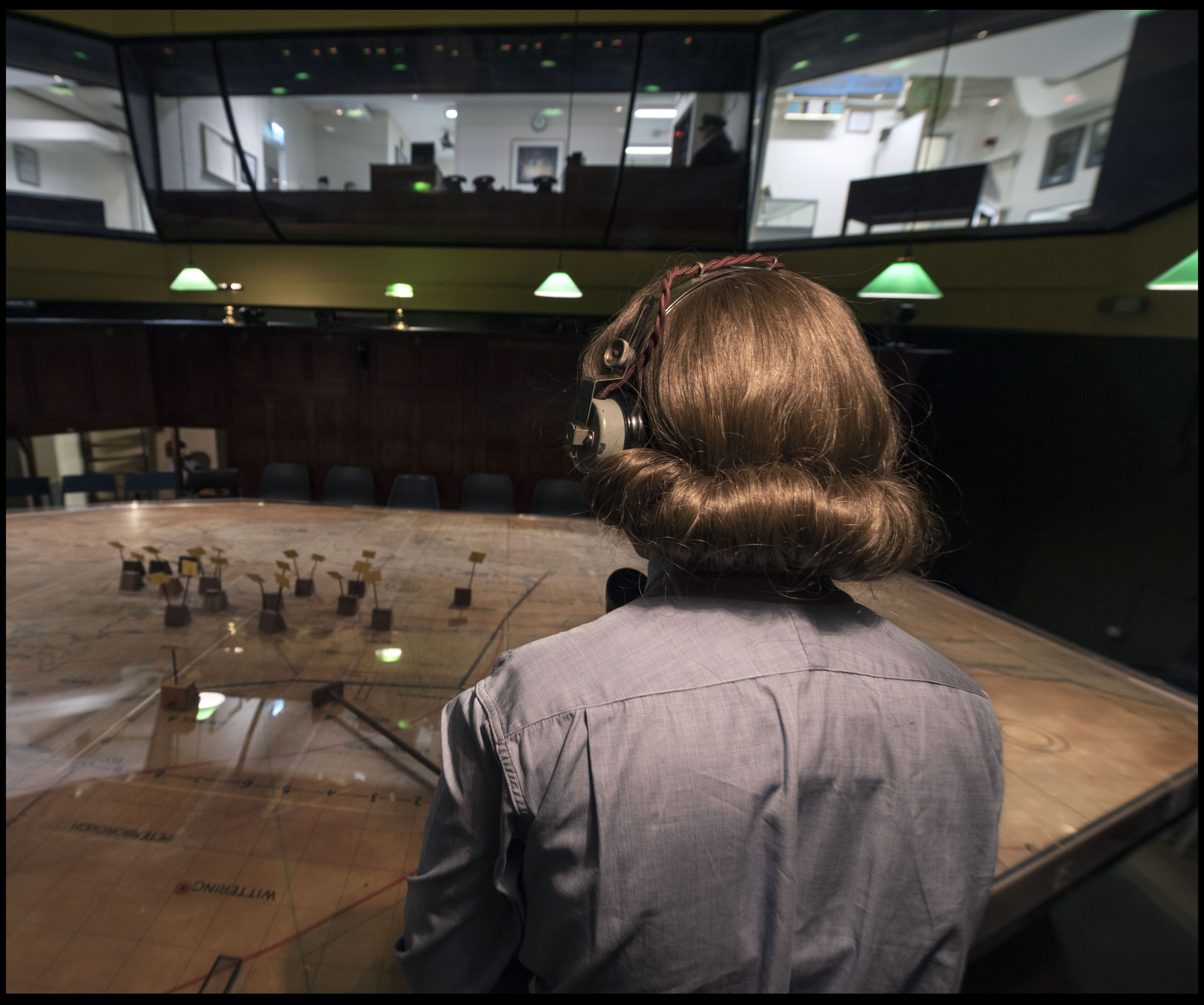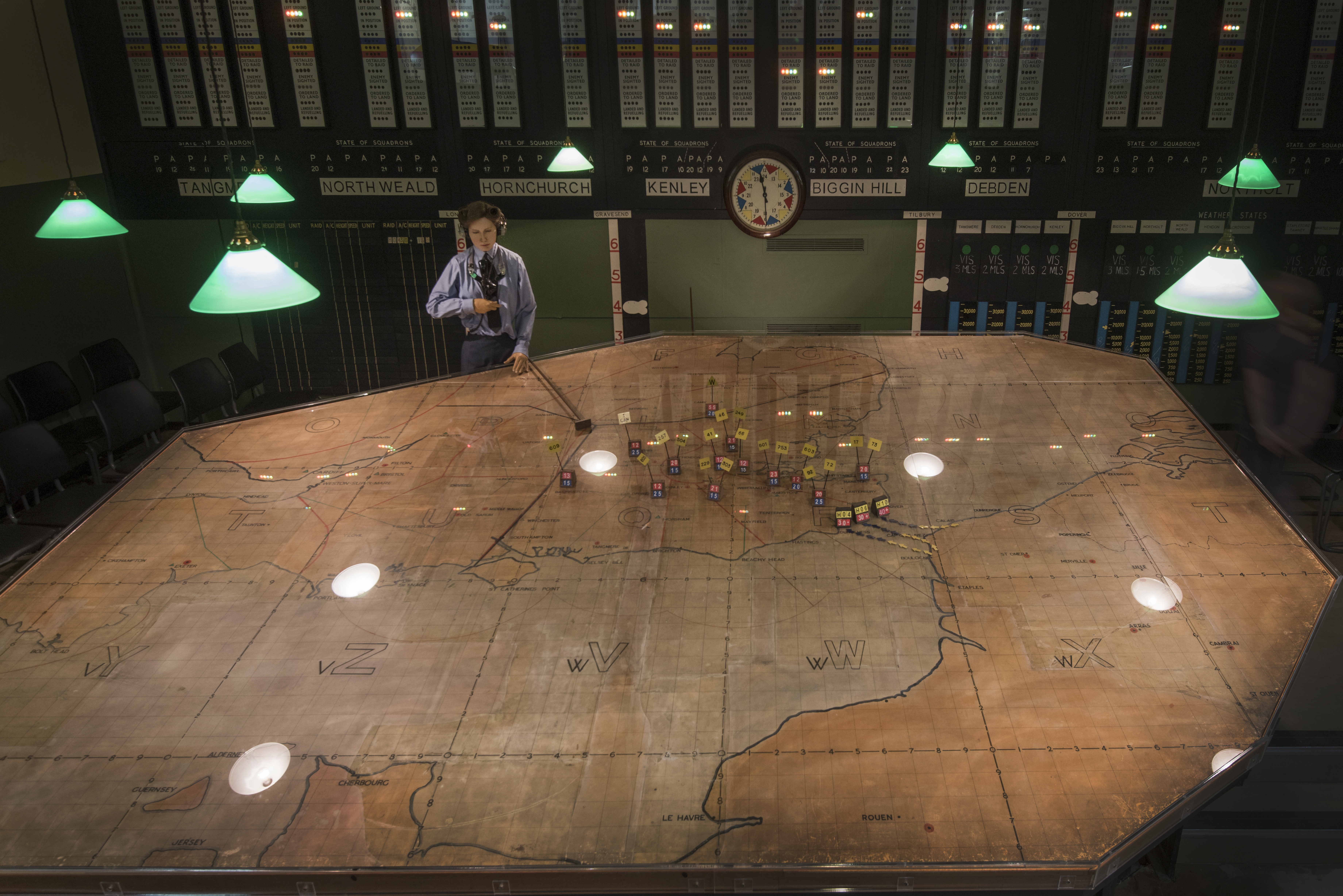VIRTUAL RESOURCES
THE BUNKER
THE BATTLE UNDERGROUND
The new Controller’s Cabin soundscape at the Battle of Britain Bunker is now complete and ready to be enjoyed by visitors.
The Controller’s Cabin was an important location during the Second World War where vital decisions were made on how, when and where to intercept enemy aircraft. Inside that room Air Vice-Marshal Keith Park, Air Officer Commanding No. 11 Group, worked alongside his Senior Controllers to determine how best to defend Britain.
The soundscape enables members of the public to hear the voices, sounds and decisions that would have been heard on the morning of 15 September 1940, now known as ‘Battle of Britain Day’, due to the decisive outcome of the fighting that occurred between the Royal Air Force and the Luftwaffe.
The launch on 31 October 2020, marks the 80th anniversary of what is now recognised as the last day of the Battle of Britain. Although the end of the anniversary period, it is intended that this permanent installation will act as a legacy to all that served with No. 11 Group (Fighter Command) during the Second World War. No. 11 Group was at the heart of the Dowding System – the world’s first integrated air defence system – which coordinated fighter aircraft, ground defences, and cutting-edge technology to protect Britain during the war alongside organising offensive operations over Europe.
Visitors will learn about the role and duties of the Group Controller and see the brand new re-display of the Controller’s desk, which includes communications equipment, operational reports, maps and other intriguing items.
One object of particular interest is a 1930s dip pen that was found during a recent clean under the desk. The nib is twisted and broken, but given its age, where it was located and the style of pen it is very likely that this object was used by a controller during the war!
The pen is now back in its rightful home . . . on the desk.
Following extensive research, the floor has been changed to replicate the original appearance in 1940 and new chairs have been included in the Operations Room to complement the historic appearance and improve accessibility for visitors. The experience forms part of the guided tours of the Bunker and can be enjoyed at no extra cost. Please book tickets via the website.
The Battle of Britain Bunker would like to thank the Friends of No. 11 Group for donating historic objects for display on the Controller’s desk.
THE BUNKER
Please explore our gallery of photographs showing different interior shots of the Bunker. Completed in 1939, the Bunker housed the Operations Room for No. 11 Group (Fighter Command) during the Second World War. Located deep underground, the Bunker remained top secret throughout the war and was reopened alongside our Exhibition and Visitor Centre in 2018.
BATTLE OF BRITAIN 80
BATTLE OF BRITAIN 80: MEMORIAL EVENT
On the Sunday before ‘Battle of Britain Day’, we would like to take this time to remember the fallen; the men and women who gave their lives during the Battle of Britain eighty years ago. In lieu of hosting a live ceremony please watch our virtual event, which includes speeches from Prime Minister Boris Johnson, the Polish Embassy UK Ambassador Arkady Rzegocki, the Mayor of London Borough of Hillingdon Cllr Teji Barnes and representatives from the Royal Air Force, Polish Air Force Memorial Committee, Polish Airmen’s Assocation and Friends of No. 11 Group. We hope you enjoy this commemorative ceremony and take a moment to reflect and remember the fallen.
HOW THE HURRICANE CAME TO BE
Military aviation historian and historic aircraft pilot, Howard Cook, visited the Battle of Britain Bunker for a virtual lecture. In this video Howard discusses the history of the Hawker Hurricane, and how its design and purpose were influenced by previous aircraft from the First World War and the interwar years. The Hurricane is often referred to as the ‘workhorse’ of the RAF during the Battle of Britain and made up over half of the total number of fighter aircraft that participated. We hope you enjoy this virtual lecture – stay tuned for more to come!
THE LEGACY OF THE SPITFIRE
Historian and author Paul Beaver at the Bunker to discuss the legacy of the Spitfire. How did this fighter aircraft become so iconic and what makes it so special? We hope you enjoy another one of our virtual lectures and tune in tomorrow at 11:00 for our special 80th anniversary commemorative event.
THE AIR DEFENCE SYSTEM
Battle of Britain historian and author Stephen Bungay is in our underground Bunker to discuss the air defence system, commonly known as ‘The Dowding System’. From the First World War, developments in technology, communication, and detection allowed for the creation of the first integrated air defence system, a critical factor in winning the Battle of Britain.
PRIDE MONTH
Pride Month is dedicated to celebrating LGBTQIA+ communities around the world. The Bunker has done a ‘virtual celebration’ of Pride Month by showcasing our colourful collection to form a rainbow. The rainbow flag is the symbol of the Pride movement, the colours reflect the diversity of the LGBTQIA+ community, and the flag is often used as a symbol of collective pride during marches.
RED CONTROLLER’S TELEPHONE
This telephone was used by the Group Controller in the Controller’s Cabin. The Controller sat overlooking the plotting table and could see what was happening in real time. The Controller had as little as two minutes to analyse this information and make a decision on how best to respond to the threat and deploy available squadrons.

ORANGE PLOTTING MARKER
This arrow would have been used on the map table in the Plotting Room (Operations Room) in the Bunker. Arrows like this one could have pointed out important information, or shown the direction of travel for an enemy raid. Originally, these markers would have been made out of wood or Bakelite (an early form of plastic), but this one here is painted metal.

YELLOW LIFE PRESERVER
Life preservers were especially important during the Battle of Britain, when many fighter pilots found themselves flying over the English Channel. This particular version is the 1932 Pattern, and its waistcoat design closed with three buttons and two buckled straps. Some personnel painted their life preservers with bright yellow paint, so they could be easily spotted after baling out of the aircraft into water.

GREEN ANTI-AIRCRAFT SEARCHLIGHT
A searchlight would have been used throughout Britain to locate enemy aircraft at night. It produced a powerful beam (90cm in diameter) and had a five mile range. Once the enemy aircraft had been spotted, the searchlight would attempt to ‘lock on’ to the aerial target and anti-aircraft gunners would open fire. Many searchlights were operated by women from the Auxiliary Territorial Service (ATS).

BLUE ROYAL OBSERVER CORP JACKET
Here is our blue Royal Observer Corp uniform jacket. The Observer Corps provided information about enemy raids and spotted, tracked and reported enemy aircraft as it passed over Britain. Any relevant information would be reported to the regional Headquarters and then passed to Group and Sector Operations Rooms. This jacket was part of the new issued uniform following the title change to Royal Observer Corps in 1941.

PURPLE NITRILE GLOVES
To complete our rainbow for the end of Pride Month, we’ve chosen a rather unusual item… nitrile gloves! Whilst these are not part of our collection, they play an important role in keeping artefacts safe when handling. We wear gloves when working with all of our objects, as our skin secretes oils and metabolic wastes (salts, etc) and these can react aggressively with some materials causing irreversible damage. For example, fingerprints can cause damage/corrosion on metals. Nitrile gloves can also protect us from any substances on objects that may be harmful to us, such as historic paints. Needless to say, we would not be able to do our jobs without them.

FOR FAMILIES
WOMEN IN THE BUNKER
Download our free resource pack about the Women’s Auxiliary Air Force, and ‘Women in the Bunker’. Learn more about women during the Second World War, and the important role they had here at RAF Uxbridge. Created by our Education Team, this pack is filled with information, photographs, and fun activities to do at home. This particular packet is aimed for Key Stage 2 students.

CREATE YOUR OWN BUNKER
It’s time to get crafty, and create your own Bunker! Using recyclable materials found at home, we have created a miniature Bunker with plotting map, Tote Board, Dais and even the Controller’s Cabin. Why not download this free education pack and see if you and your family can recreate our Bunker.

DUNKIRK 80
DUNKIRK 80
In 2020 we commemorated the 80th anniversary of Operation Dynamo (26 May – 4 June 1940) . It was launched to evacuate Allied service personnel from Dunkirk on the coast of France. It was a huge rescue mission resulting in the evacuation of over 338,000 servicemen. To commemorate this important anniversary, we have produced five panels providing information on the role of No. 11 Group and the Bunker.
DUNKIRK 80: FIGHTER FACTS IN 80 SECONDS
PART I
To commemorate the 80th anniversary of Operation Dynamo we have created two short videos sharing a few facts about the Bunker and its role leading up to and during the evacuation. Content includes operations over France and operations over South-East England.
Image acknowledgements: Images 2 & 3: Ⓒ Crown copyright. Courtesy of Air Historical Branch, Image 4: The National Archives, Battle of Britain fighter defences map, 1940 (AIR 41/16).
DUNKIRK 80: FIGHTER FACTS IN 80 SECONDS
PART II
Content includes the protection of convoys and of the Herring Fleet.
Image acknowledgement: Image 1: Commonwealth War Graves Commission (cwgc.org)
D-DAY
D-DAY 76
IN 76 SECONDS
In 2020 we commemorated the 76th anniversary of Operation Overlord. Bunker volunteer – Chris – has provided a few facts on the site’s important role during the Normandy landings — all in 76 seconds! You can learn more about D-Day and Operation Overlord by exploring our D-Day exhibition, which will remain on display.
Image Three ‘D-Day – British Forces During the Invasion of Normandy 6 June 1944’ © IWM CL 22






















